Art Detective
Is It Time to Cut Art Prices? Long Considered Taboo, the Idea Is Gaining Traction
The market has 'completely stopped' for many artists. Is it possible to lure in new buyers 'without causing a total crash of their careers?'
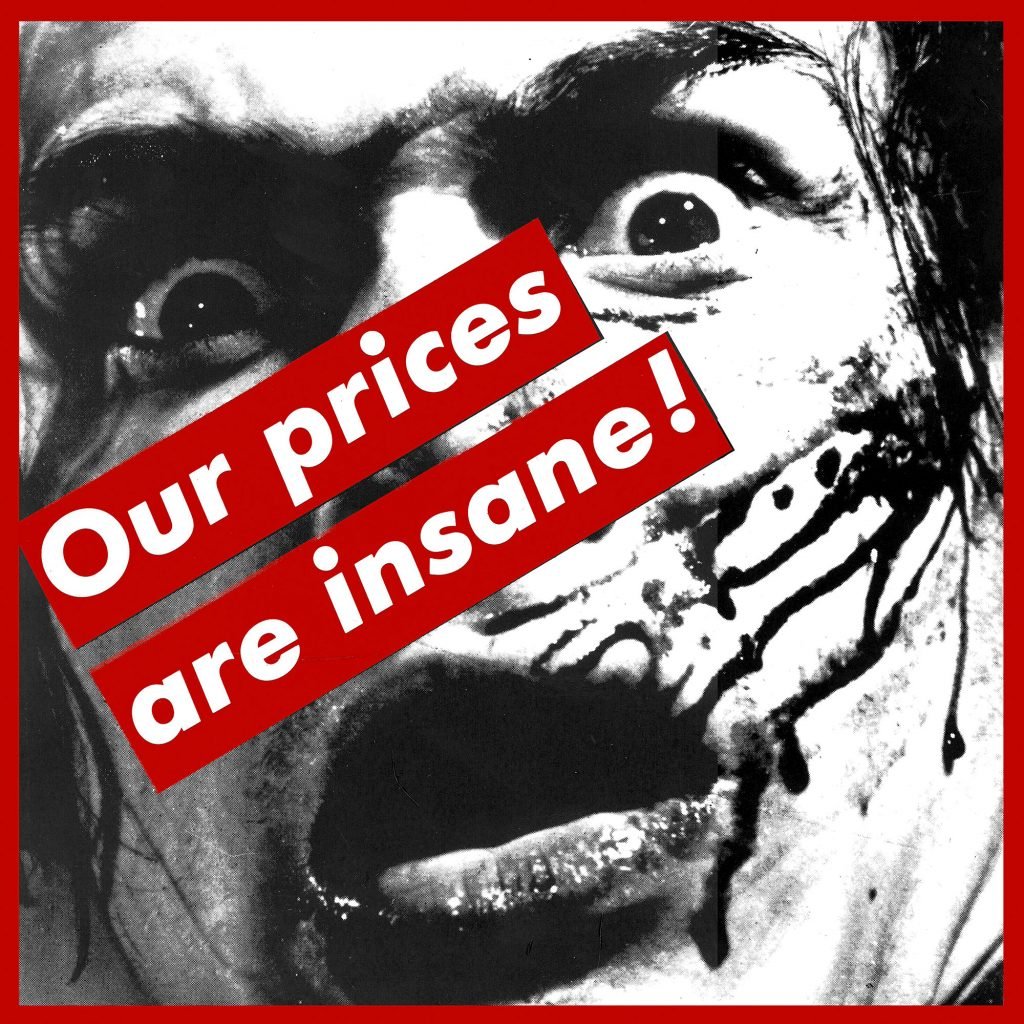
The market has 'completely stopped' for many artists. Is it possible to lure in new buyers 'without causing a total crash of their careers?'

Katya Kazakina

Why are prices for new works by many artists so high? Are those prices prudent when artists are still emerging and have little track record? Are they justifiable when demand dries up and resale prices dip?
Is there a time when galleries should consider—gasp!—cutting prices?
Long viewed as taboo, the possibility of reducing primary prices pops up now and then, usually when a speculative bubble is about to burst. The latest round of whispers about this issue began about two years ago. Now the conversation is finally spilling into the open as resale values fall short of purchase prices, and artists find themselves stuck in the middle of a liquidity crunch that is throwing the market into a tailspin.
“Artists who had lived healthy lives, having a show every few years, always selling out, and having a very devoted buyership, for so many of these artists, the market completely stopped,” power advisor Allan Schwartzman told a roomful of industry insiders at Talking Galleries New York conference this week on the 66th floor of a skyscraper in the Hudson Yards development in Manhattan.
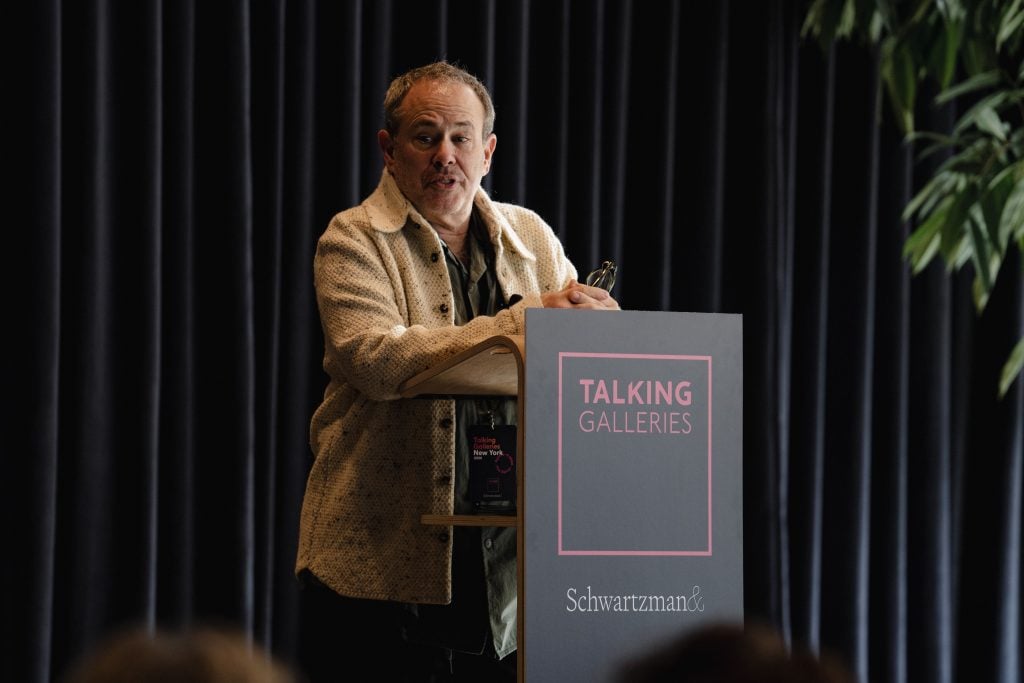
Allan Schwartzman speaking at Talking Galleries in New York this week. Courtesy Talking Galleries
Prices are at the foundation of an artist’s ability to keep working. They represent, quite literally, a livelihood. So, galleries have an immense responsibility to get the numbers right.
In the case of hot artists, dealers must make hard decisions about pricing and access. They prioritize museums and key collectors. Things get complicated when demand far outstrips supply and secondary prices spike. Flippers flood the market, hoping to cash in, and even the most-respected collectors sometimes cannot resist taking a huge profit. In 2022, for example, the Dallas collector Howard Rachofsky resold a 2019 painting by Christina Quarles, who turns 40 next year, for $4.5 million.
What are galleries to do?
Elizabeth Dee, the co-founder of Independent art fair, spoke at Talking Galleries about the confusion in the gallery sector about an “adjustment of pricing” for mid-career artists, given the economic downturn. She wanted to know, should dealers cut?
“I actually believe that a lot of artists would benefit from that,” Schwartzman said. “This requires thinking across the market—especially mid-career artists for whom the market virtually stopped. I think it would be very healthy to see very significant drops for those artists, who have experienced enough years without activity. There’s a new collector base they need to find.”
It’s a risky move. Jasmin Tsou, who ran the influential JTT gallery in New York for 11 years, until closing in 2023, cautioned during another Talking Galleries panel that “you can’t lower the value of the artists’ works without causing a total crash of their careers.”
In other industries, Tsou noted, you can raise and lower prices without sacrificing perceptions of intrinsic worth. The price of a hotel room is usually different on different nights, but “you know that the quality of that room remains the same on Tuesday and on Saturday,” she said.
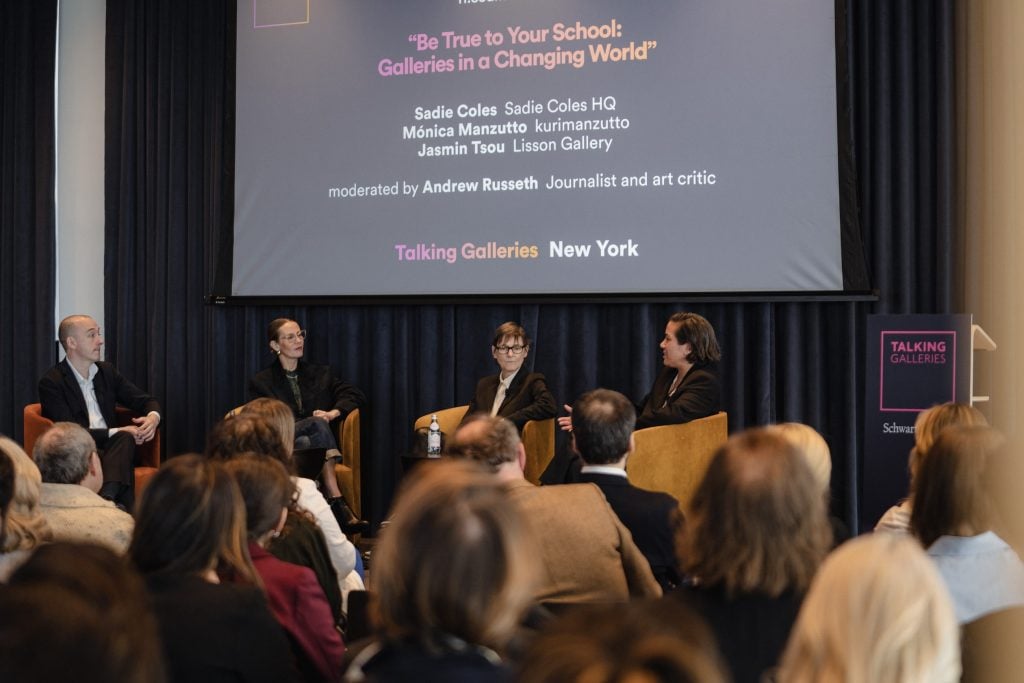
Jasmin Tsou, right, Andrew Russeth, Mónica Manzutto, and Sadie Coles. Courtesy Talking Galleries.
But collectors don’t view what they pay for artworks the same way as what they pay for hotel rooms. “If that number goes down, they are going to think something about the artist,” Tsou said.
These are not happy thoughts, it’s safe to say.
“You constantly want the primary market to go up,” billionaire collector Tom Hill said at Talking Galleries.
Going up, and up, and up, can—and has—landed many artists in a trap. As demand plateaus or declines, prices begin to reflect a past that no longer exists. Sales dry up. Buyers move on to newer, younger, more exciting pastures. Galleries stop showing your new work.
“Being an artist is hard,” said New York dealer Marianne Boesky. “It’s a rollercoaster life by definition. You can be the most successful artist on the planet today and not be in demand three years from now.”
In 1996, when Boesky opened her gallery, it took about a decade for artists to go from zero to a significant auction result, she said, but this timeline has contracted radically in the age of Instagram. “In three years, an artist can go from utterly unknown to crazy market darling.”
I contacted Boesky to speak about her gallery’s current exhibition with Danielle Mckinney, whose small, dark, sensual paintings depict Black women sporting neon-pink nail polish on their fingers and toes. They suggest a cross between the intimate scenes of Eric Fischl and Lynette Yiadom-Boakye, but on a smaller scale.
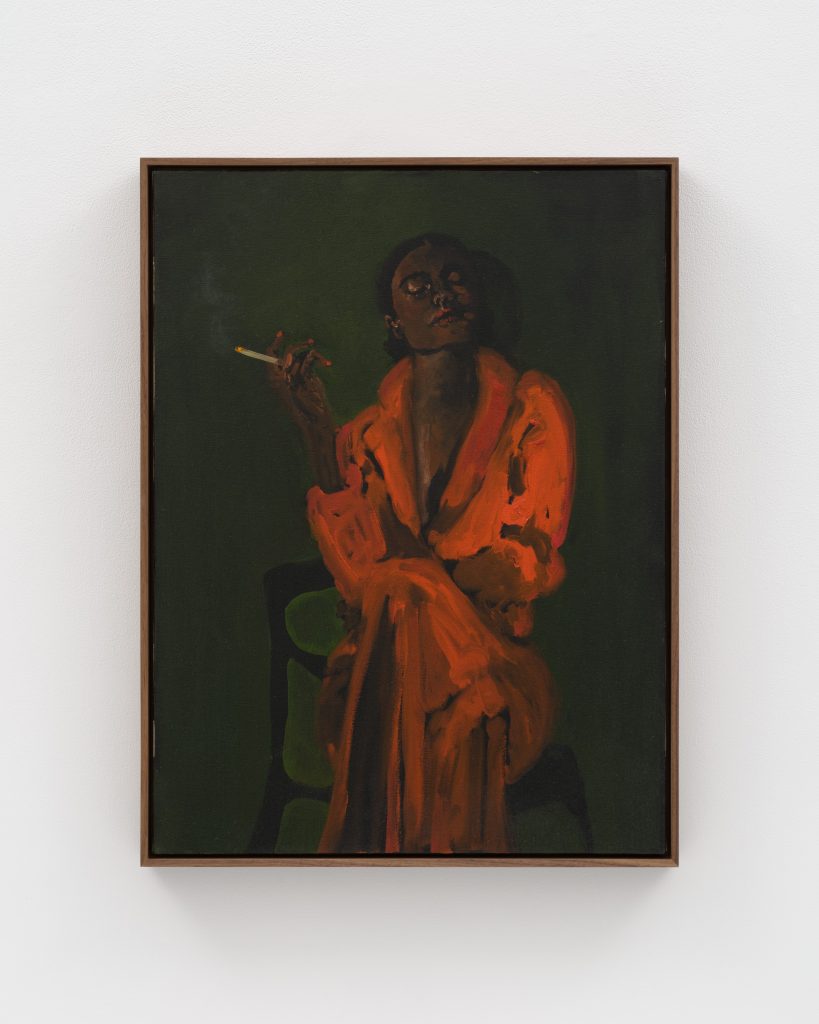
Danielle Mckinney, Hold your Breath (2024) © Danielle Mckinney and courtesy of Marianne Boesky Gallery
“Never in my 28 years of owning a gallery have I experienced such depth and breadth of demand,” said Boesky, who has represented superstar artists like Yoshitomo Nara, Takashi Murakami, and Lisa Yuskavage. “People are dying for a painting.”
The buzz surrounding Mckinney started three years ago, just as the art world began to emerge from pandemic restrictions. The young artist Vaughn Spann, whose own star was shining bright, included her in a show he curated at Half Gallery, a New York launching pad for many artists who took off in the past decade. Financier collector Glenn Fuhrman’s Flag Art Foundation in Chelsea featured the artist in a sprawling summer show along with other nascent voices, like Anna Weyant. Three solo exhibitions soon followed, including at Marianne Boesky’s Aspen space and Night Gallery in Los Angeles. A new 24-by-18-inch oil painting went for $20,000 at the time.
“Danielle Mckinney: Quiet Storm,” which opened at Boesky’s Chelsea headquarters last week, has 12 paintings on view, and 10 for sale. Prices range from $60,000 to $90,000, for a 24-by-18-inch knockout of a painting of a woman in a red robe, smoking.
That’s a 350-percent increase in three years. But collectors are undeterred.
Boesky said she set the prices for Mckinney’s latest paintings after thinking long and hard about balancing two competing needs: disincentivizing speculators (by charging more) and attracting museum interest (by not charging too much).
She has already placed Mckinney’s paintings in about 15 institutional collections. Multiple museum exhibitions are lined up, and many other acquisitions are in the pipeline, Boesky said.
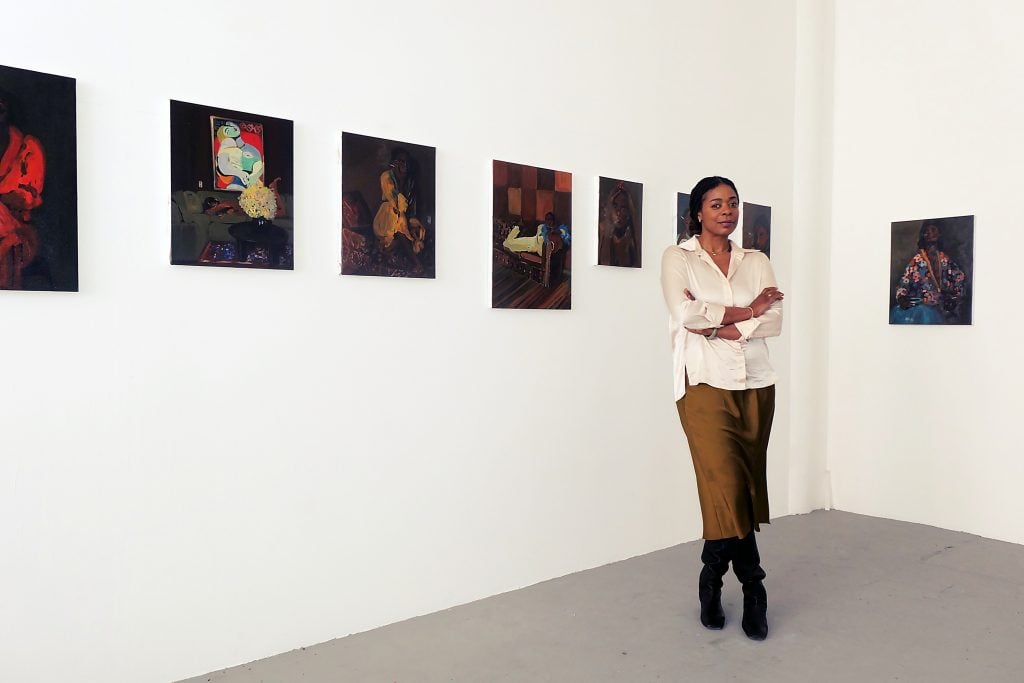
Danielle Mckinney. Courtesy of the artist and Marianne Boesky Gallery, New York and Aspen
The new prices are roughly in line with Mckinney’s auction numbers. Last May, a smaller canvas acquired through Night resurfaced at Christie’s, fetching $201,600, ten times its presale low estimate. Last month, another one came up at the house and sold for $100,800, twice its low estimate.
“Prices we’ve set are not making anyone say, ‘No thanks,’” Boesky said. “It feels right.”
We should all wish for Mckinney to have a long, stable, and successful career. But the art market is fickle, and fortunes can turn fast.
Take Rudolf Stingel, a successful artist by any measure. When he had a 2007 retrospective at the Whitney and the MCA Chicago, he was represented by a trio of respected dealers: Paula Cooper in New York, Sadie Coles in London, and Massimo de Carlo in Milan.
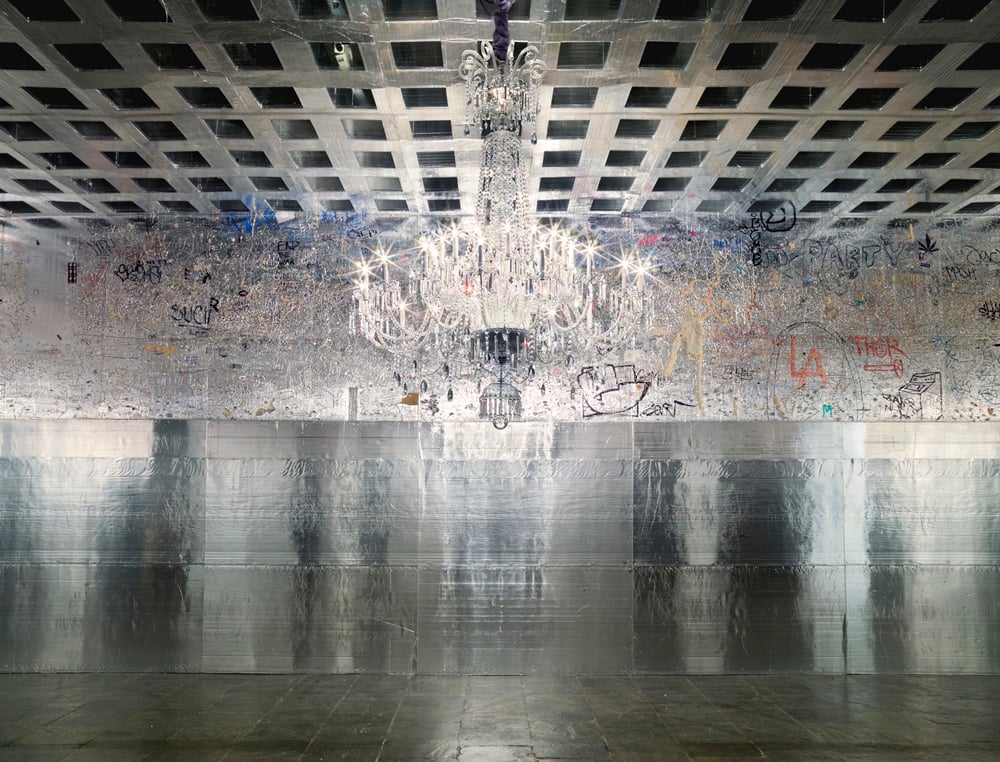
“Rudolf Stingel: Paintings 1987–2007,” installation view, Whitney Museum of American Art, New York, NY, June 28–October 14, 2007. Photo: Ellen Wilson. © Rudolf Stingel. Courtesy Paula Cooper Gallery, New York.
After joining Gagosian, the artist would sell out every exhibition, with prices for new works starting at $800,000 and going up to $3 million. In 2015, 18 dazzling new metal pieces—gold-plated, bulletproof versions of his celebrated (but fragile) early Styrofoam panels—sold in 30 minutes after being released for his exhibition at Gagosian in Hong Kong, according to a person familiar with that show.
In 2017, Stingel’s annual auction sales reached an apex of $52.1 million. Then things began to unravel. In part that was due to a change in taste, in part due to the machinations of fraudster Inigo Philbrick, and in part due to the sheer unsustainably of most high prices.
Reporting on the Stingel market at Bloomberg at the time, I quoted art advisor Benjamin Godsill saying, “It became too quickly a mega-bucks market for trophy-hunting collectors. The prices outstripped people’s ability to buy the work. And that sucked a lot of oxygen out of the market.”
People were stuck with works they could no longer resell. This past December, one of those gold-plated pieces, estimated at about $1 million to $1.5 million, failed to find a buyer at Christie’s Hong Kong. In fact, of the 22 lots offered in 2023, a third failed to sell, according to the Artnet Price Database. Stingel’s auction total was just $6.3 million, an 87-percent decline from the peak of 2017.
More Stingel works are coming to the auction block this May as part of the sale of the Rosa de la Cruz Collection at Christie’s—at a moment when there is tremendous trepidation in the market. How they perform will depend on whether the estimates are in line with current demand. If they are conservative enough, new players may jump in and bid, raising prices once again.
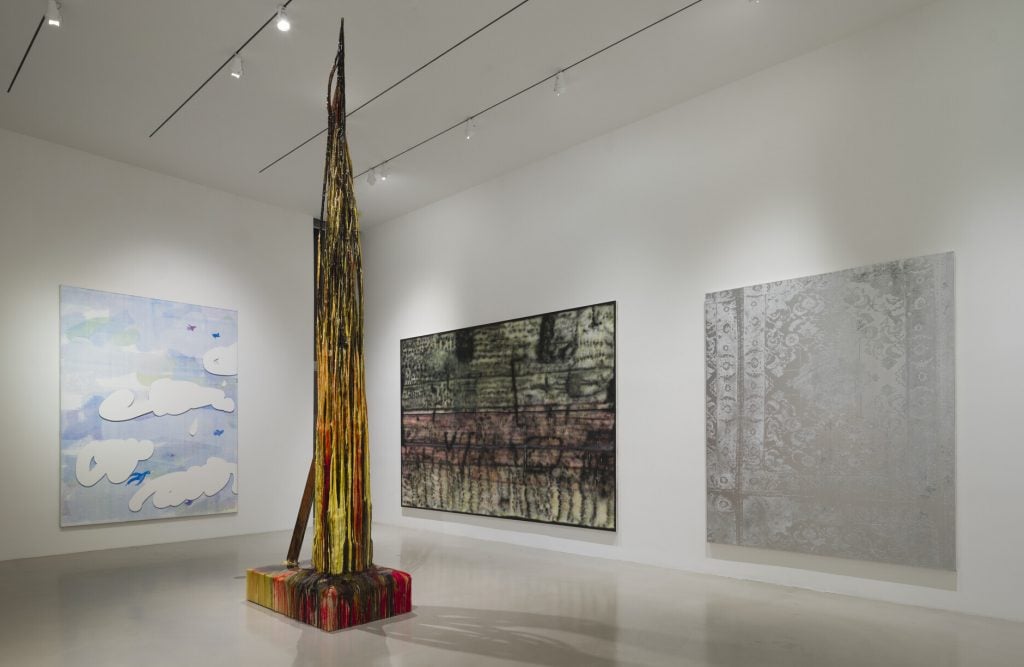
From left to right, works by Laura Owns, Sterling Ruby (the sculpture and next painting), and Rudolf Stingel at the de la Cruz Collection in Miami. Courtesy Christie’s
How to cut prices on the primary market in a safe, sustainable way is a riddle that has not yet been solved. Several dealers told me that they are not opposed to doing so in principle, but they are not sure how collectors and artists would react. For now, they are just offering discounts.
Some suggested that an artist’s market could be reset by pivoting to smaller formats or different media. Instead of doing large-scale canvases, for example, an artist could focus on works on paper. (One could even see Stingel’s current show at Gagosian on the Upper East Side—an installation consisting of three modestly sized paintings, carpeting, and music—as a kind of pivot, though, at $3.5 million, its price is hardly modest).
“There’s no pressure to churn out those paintings that everyone wanted,” said Sarah Gavlak, the owner of the Gavlak gallery in Los Angeles and Palm Beach. “I’d encourage an artist in my program to experiment. Do a print project. What do you have to lose?”